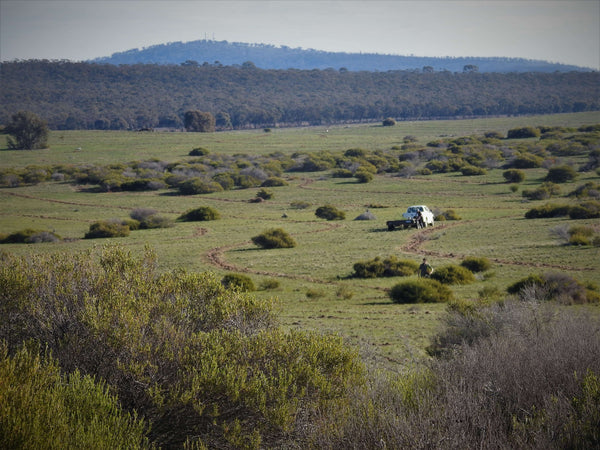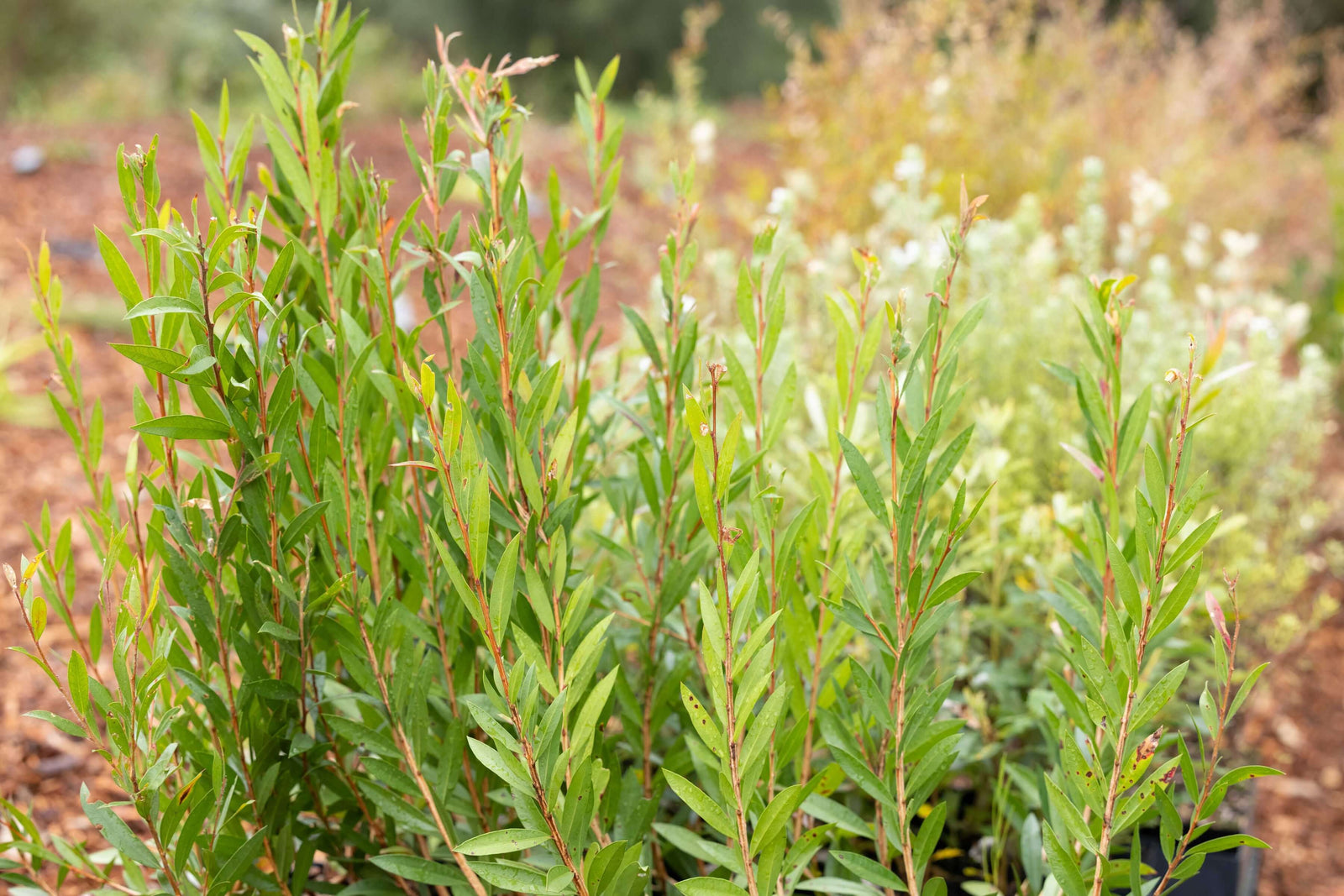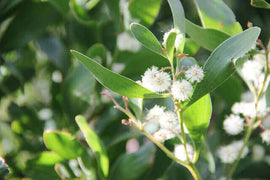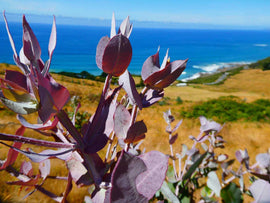
On Dja Dja Wurrung Country in Central Victoria, Greenfleet is growing climate hope by revegetating a 340-hectare parcel of land named Ngulambarra, meaning “meeting place” in Djaara language. This project, also known as Pearson, is playing an important role in restoring endangered grassy woodlands and enhancing biodiversity through connecting and healing Country.
Woodlands once covered large areas of south-eastern Australia. From Queensland down the inland side of the Great Dividing Range, through NSW and Victoria to the south-east of South Australia.
Since European settlement, one third of Australia’s woodlands have disappeared 1 and in Victoria alone, 83% of our woodland ecosystems have been impacted by land clearance1. What remains is the most threatened wooded ecosystem in Australia, and the birds, mammals and reptiles that inhabit these areas are in sharp decline.
This Is Why Greenfleet’s Work At Ngulambarra Is So Important.
The restoration of significant sites like Ngulambarra, is vital to the protection of Australia’s biodiversity values. Not far from the town of Wedderburn, the property is home to a genetically diverse range of plant and animal species which is why Greenfleet’s work is critical in restoring them.
Despite being degraded by agricultural activity and land clearing, the site at Ngulambarra contains 60 hectares of remnant woodland, which include native species such as Yellow Gum (Eucalyptus leucoxylon), Blue Mallee (Eucalyptus polybractea) and Green Mallee (Eucalyptus viridis).
These grassy woodlands are home to wildlife species such as Lace Monitors, Woodland Blind Snakes as well as native birds like Little Button-quails, Shy Heathwrens, Inland Thornbills and many other species listed as vulnerable or endangered.
Connecting Country
Located between conservation properties at Ngarri-Mt Egbert in the east and the Lawan Reserve to the west, Ngulambarra forms a key piece of the Wychitella Biolink.
The biolink is a revegetation and ecological connectivity project that is reconnecting habitat for isolated populations of threatened species like the Swift Parrot, Quoll and the ground-dwelling Malleefowl.
Understanding how wildlife moves across landscapes is an important consideration in forest restoration. Establishing refuge corridors like the Wychitella Biolink is essential for the long-term survival of these wildlife species as it allows them to move across the landscape to find food, shelter, and opportunities to breed.
The work at Ngulambarra is vital for the restoration of our woodlands and biodiversity. Victoria has already lost 83% of its woodland ecosystems to land clearance2, and the drier climate is threatening the remaining fragmented landscape. Greenfleet’s Senior Project Manager, Philip Martin noted that “each parcel of woodland acts as an ark for wildlife in an ocean of deforestation”.
“each parcel of woodland acts as an ark for wildlife in an ocean of deforestation”
Climate Resilient Ecosystems
Greenfleet’s project at Ngulambarra aims to not only restore an important ecosystem and increase biodiversity, but to help safeguard these precious woodlands from the impacts of climate change.
As the region experiences hotter and drier conditions linked to a warming climate, the grassy woodlands have also experienced eucalypt dieback. Planting eucalypts is a key part of the Ngulambarra project as these species can adapt to different conditions through cross pollination with other eucalypt species. This hybridisation allows them to survive and thrive.
In 2020 Greenfleet planted over 114 hectares with 13,000 native seedlings and 60kg of native seeds. During 2021 another 139 hectares of species endemic to the region have been planted. These species include Grey Box (Eucalyptus microcarpa), Blue Mallee (Eucalyptus polybractea) and Buloke (Allocasuarina luehmanni), a threatened species4. This revegetation effort improves the health of the soil, its ability to retain water, and ameliorates erosion and salinity issues.
Indigenous Cops That Heal Country
Greenfleet recognises the benefit of working with Traditional Owners in the restoration and management of its native forests.
Ten percent of Ngulambarra has been planted with culturally significant food and fibre grasses that will be managed by the Dja Dja Wurrung people (Djaara). These indigenous grass species will help to restore degraded land and have the potential to become climate appropriate food crops.
For Indigenous Australians, the health of the land is inextricably linked with their own wellbeing. Djaara have lived on, and cared for, djandak (Country) in Central Victoria for many thousands of years. Core to achieving goals of self-determination for Djaara is the active management of natural resources to ensure connection to Country and to develop sustainable economic outcomes for their community.
Buwatji (grasses used for grain) and Witji (weaving grasses) are among the indigenous grasses being grown at Pearson, alongside Murnong (an edible tuber also known as native Yam Daisy). Additional benefits of growing these native grasses are that they are adapted to the nutrient composition of the soil.
These perennial plants have deep root systems that help control soil salinity, which plays an important part in ecosystem health, as well as sequestering carbon.
Climate change will increase the pressure on the world’s biodiversity, but there are practical steps we can take to heal and protect Country for future generations. The future-ready actions taking place at Ngulambarra are localised efforts responding to a global crisis. Protected for 100 years, this work is growing hope for vulnerable ecosystems like Victoria’s grassy woodlands and the wildlife that call these areas home.
References:
1. Australian Government, Department of Agriculture, Water and Environment: https://www.environment.gov.au/land/woodlands
2. Kelly M, Mercer D (2005) Australia's Box–Ironbark Forests and Woodlands: saving the fragments of a threatened ecosystem, Australian Geographer
3. Cresswell ID, Murphy H (2016). Biodiversity: Importance of biodiversity. In: Australia state of the environment 2016, Australian Government Department of the Environment and Energy, Canberra
4. https://www.environment.gov.au/cgi-bin/sprat/public/publicshowcommunity.pl?id=3&status=Endangered
Find similar articles
Climate action



